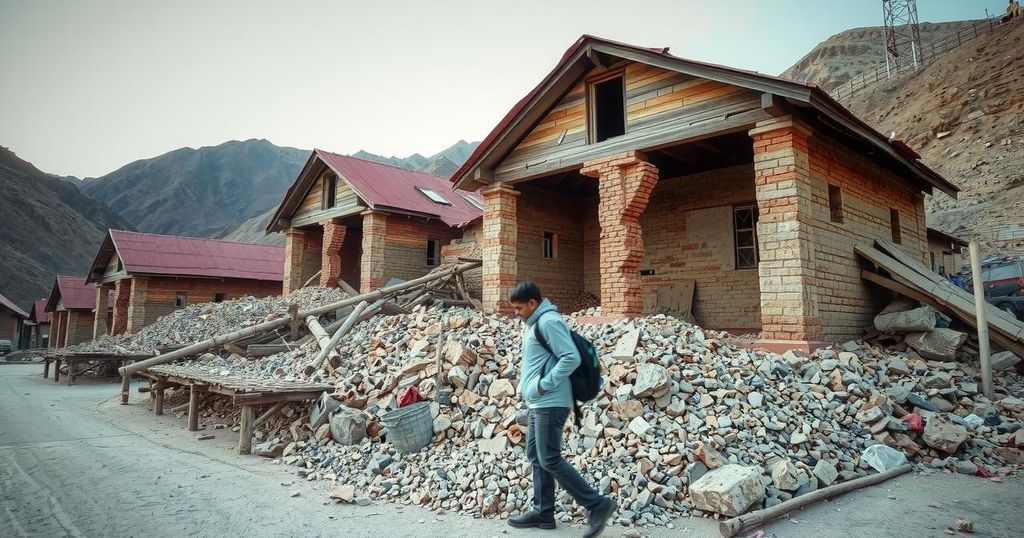Tibet Earthquake: Catastrophic Impact and Rescue Efforts Underway
A magnitude 6.8 earthquake struck Dingri, Tibet, on January 7, collapsing homes and killing at least 126. Rescue efforts face harsh weather and aftershocks, complicating the situation. President Xi Jinping urged for prompt search and medical operations to minimize casualties.
On January 7, at 9 a.m. local time, a devastating earthquake struck Dingri, a rural county in southern Tibet, resulting in significant destruction. With a magnitude of 6.8 according to China’s national earthquake agency, and registered at 7.1 by the United States Geological Survey, this natural calamity caused the collapse of homes and infrastructure. Reports indicate that at least 126 individuals have lost their lives, and 188 others sustained injuries. The official Xinhua News Agency confirmed that approximately 6,900 residents resided within a 20-kilometer radius of the quake’s epicenter.
Following the tremor, rescue efforts intensified, involving thousands of workers and military personnel attempting to extricate those trapped beneath the rubble. Rescuers faced severe challenges due to frigid temperatures, which fluctuated between -8ºC during the day and -18ºC at night, complicating efforts in the high-altitude region of 4,200 meters, located about 75 kilometers from Mount Everest. Several aftershocks were reported within hours of the initial quake, raising concerns about stability and safety.
Images from national broadcasts and social media depicted the grim reality, showing small houses reduced to mere piles of bricks and stones. Rescue teams in orange uniforms navigated the wreckage, with some scenes revealing bodies trapped beneath the debris while residents mourned their losses. The visual documentation underscored the human toll of the tragedy, including both casualties and the suffering of livestock.
In response to this disaster, President Xi Jinping called for a robust commitment to search and rescue operations, emphasizing the need for swift medical attention for the injured. He underscored the importance of efforts to “minimize the loss of life” and coordinated plans for the relocation of affected individuals. This disaster highlights the urgent need for emergency preparedness and response mechanisms in seismically active regions like Tibet.
The earthquake event in Dingri, Tibet, highlights the vulnerability of rural communities living in seismically active regions. Situated within the Himalayan foothills, Tibet regularly experiences geological activity due to the complex tectonic interactions of the Indian and Eurasian plates. Given this backdrop, the significant impact of the earthquake, including widespread destruction and loss of life, underscores the importance of preparedness for natural disasters in such isolated and harsh environments.
In summary, the January 7 earthquake in Dingri, Tibet, has led to catastrophic destruction and loss of life. With significant challenges posed by weather conditions and ongoing aftershocks, rescue operations remain a priority for authorities. President Xi Jinping’s call for comprehensive efforts to aid the affected populations highlights the critical need for organized disaster response strategies in vulnerable areas.
Original Source: www.lemonde.fr




Post Comment